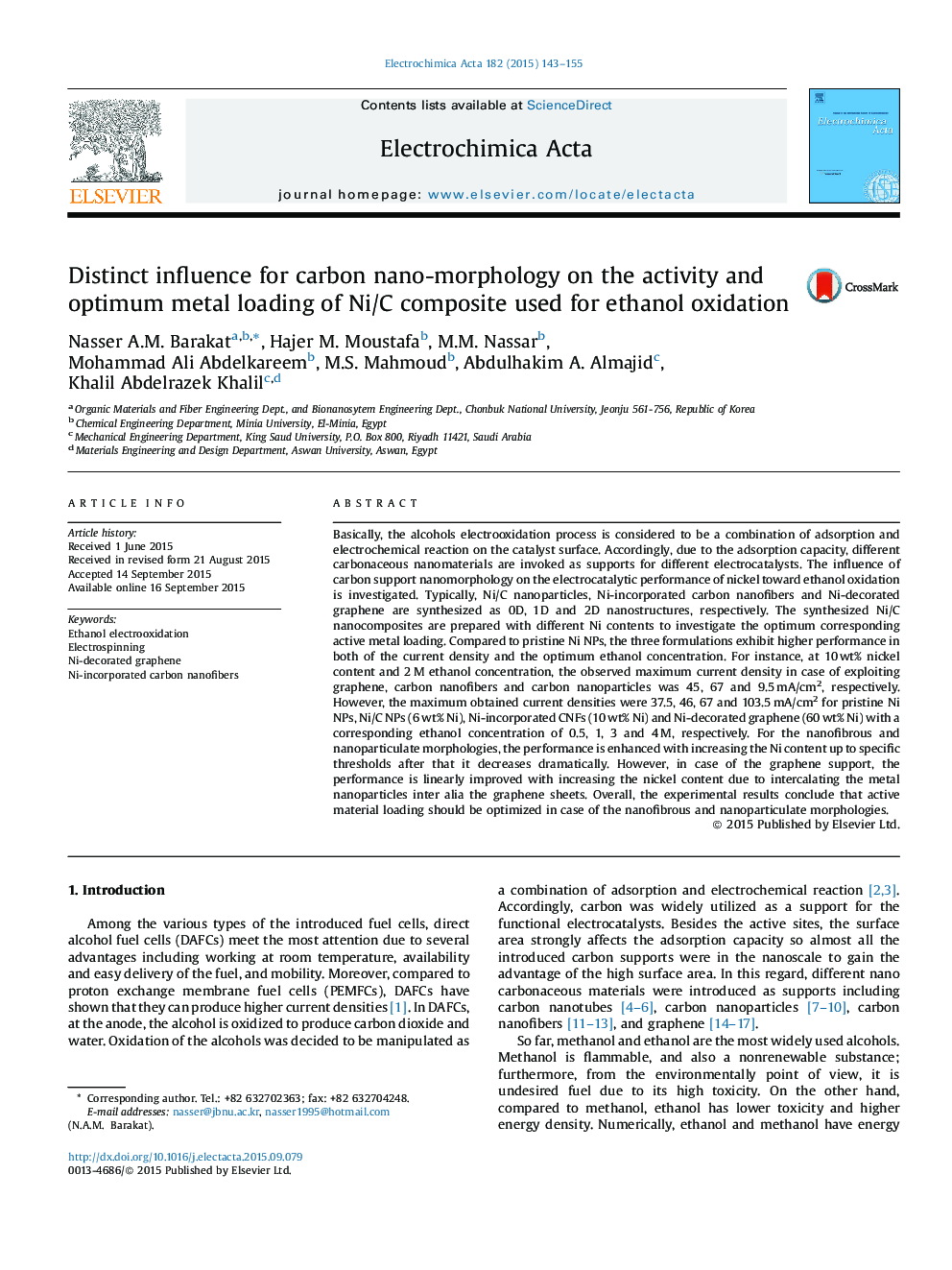| Article ID | Journal | Published Year | Pages | File Type |
|---|---|---|---|---|
| 6609828 | Electrochimica Acta | 2015 | 13 Pages |
Abstract
Basically, the alcohols electrooxidation process is considered to be a combination of adsorption and electrochemical reaction on the catalyst surface. Accordingly, due to the adsorption capacity, different carbonaceous nanomaterials are invoked as supports for different electrocatalysts. The influence of carbon support nanomorphology on the electrocatalytic performance of nickel toward ethanol oxidation is investigated. Typically, Ni/C nanoparticles, Ni-incorporated carbon nanofibers and Ni-decorated graphene are synthesized as 0D, 1D and 2D nanostructures, respectively. The synthesized Ni/C nanocomposites are prepared with different Ni contents to investigate the optimum corresponding active metal loading. Compared to pristine Ni NPs, the three formulations exhibit higher performance in both of the current density and the optimum ethanol concentration. For instance, at 10Â wt% nickel content and 2Â M ethanol concentration, the observed maximum current density in case of exploiting graphene, carbon nanofibers and carbon nanoparticles was 45, 67 and 9.5Â mA/cm2, respectively. However, the maximum obtained current densities were 37.5, 46, 67 and 103.5Â mA/cm2 for pristine Ni NPs, Ni/C NPs (6Â wt% Ni), Ni-incorporated CNFs (10Â wt% Ni) and Ni-decorated graphene (60Â wt% Ni) with a corresponding ethanol concentration of 0.5, 1, 3 and 4Â M, respectively. For the nanofibrous and nanoparticulate morphologies, the performance is enhanced with increasing the Ni content up to specific thresholds after that it decreases dramatically. However, in case of the graphene support, the performance is linearly improved with increasing the nickel content due to intercalating the metal nanoparticles inter alia the graphene sheets. Overall, the experimental results conclude that active material loading should be optimized in case of the nanofibrous and nanoparticulate morphologies.
Related Topics
Physical Sciences and Engineering
Chemical Engineering
Chemical Engineering (General)
Authors
Nasser A.M. Barakat, Hajer M. Moustafa, M.M. Nassar, Mohammad Ali Abdelkareem, M.S. Mahmoud, Abdulhakim A. Almajid, Khalil Abdelrazek Khalil,
